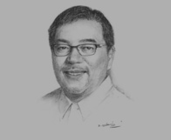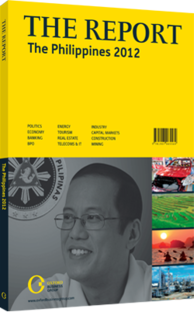OBG talks to Ramon Jimenez, Secretary, Department of Tourism (DoT)

Interview: Ramon Jimenez
How can the Philippines distinguish itself from alternative tourism destinations in the region?
RAMON JIMENEZ: The Philippine tourism industry will now be run as a business, whereas in the past the DoT operated largely as a regulatory body. We will now be working more than ever with an eye towards market share, profit, building revenue and generating employment opportunities for Filipinos. The Philippines has never really competed for its share of tourists’ attention, but we are now determined to do that starting in 2012, and the spadework began in 2011.
The recently unveiled branding campaign, featuring the tagline, “It’s more fun in the Philippines”, will be launched during 2012. The campaign was created using insight from the various players of the industry and is definitely the most competitive campaign that the Philippines has ever utilised. It is designed to build market share by focusing on the strengths of the Philippines as a destination. I believe that the Philippines is not a place just to be seen, it is a place to be experienced, because Filipinos complete the experience.
Filipinos are known worldwide for their capacity for caring and comfort – one need only look at the proportion of Filipinos operating in the global nursing and hospitality industries. By connecting this positive image of the Filipino to the country, we are hoping to reform the image of the Philippines abroad and to give the country’s people more of a direct connection to the success of the industry. We have set the ambitious target of 10m visitors by 2016, which we feel is meaningful to the country’s economy. Anything short of that will continue to land us in last place in terms of the region. There were about 3.9m visitors in 2011, and we are on track for at least 4.2m visitors by the end of 2012.
Which segments of the tourism industry have the most opportunities for investment?
JIMENEZ: With an anticipated growth rate in the industry of at least 15% per year, there will be ample opportunities for development within the sector. The biggest need for investment will be in to expand capacity of budget and mid-level hotels, but as momentum builds within the sector, we expect to see many more investors looking to tourism developments as sound investments, and we do not anticipate any issues meeting demand for hotel rooms or aeroplane seats.
There is also, of course, a huge need for investment in transport infrastructure, and this is where private-public partnership (PPP) projects will come in. While some have criticised the slow launching of these projects, the truth of the matter is that the country is for the first time pursuing such projects in the proper way with regard to transparency and accountability. There is naturally a learning curve, but by 2014, people will see that the transport infrastructure has been built, and it will have been constructed the right way for the right price. Finally, ecotourism presents the Philippines with a fantastic opportunity. Ironically, the advancement of the world’s tourism market is now very much about ensuring preservation and conservation go hand-in-hand with development. We believe that tourism as an industry is headed in the direction of the Philippines because many areas in the country remain relatively untouched, and many people want to experience that.
How can the tourism industry work as a key driver for employment and economic growth?
JIMENEZ: The attitude that the current administration has adopted is that the tourism industry is not about counting people disembarking from an aeroplane, but about generating income in the country that was previously unavailable. Tourism acts as one of the most effective vehicles for social and economic advancement throughout the country, and most developments in the sector exhibit the multiplier effect.
Moreover, the development of a hotel or resort is always accompanied by the creation of other industries around it. In this way, the country is set to enjoy a broad range of economic and social benefits, well beyond those provided directly by tourism facilities.
You have reached the limit of premium articles you can view for free.
Choose from the options below to purchase print or digital editions of our Reports. You can also purchase a website subscription giving you unlimited access to all of our Reports online for 12 months.
If you have already purchased this Report or have a website subscription, please login to continue.

